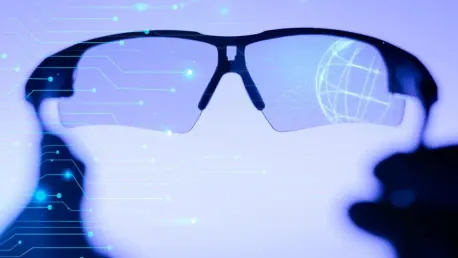In recent years, the educational landscape has seen a continuous influx of new technologies aimed at enhancing learning experiences and improving outcomes. From interactive tablets to sophisticated AI-driven tutoring systems, edtech is rapidly evolving. The latest entrant in this transformative parade is smart glasses, with giants like Meta developing advanced prototypes that promise to revolutionize how we interact with digital and physical worlds simultaneously. Smart glasses like Meta’s Orion aim to merge digital and physical realms, suggesting a new wave of computing that transcends what smartphones can offer. But what does this mean for education, and are smart glasses truly the next big thing? The potential of augmented reality within classrooms is immense, offering immersive and interactive experiences that could make learning more engaging and effective. However, while smart glasses present exciting possibilities, they also pose significant challenges that must be addressed to ensure they benefit educational environments.
The Emergence of Smart Glasses in Education
Meta’s announcement of their latest prototype, Orion, marks a significant milestone in tech evolution. These smart glasses aim to merge the digital world with the physical one, creating a new wave of computing that goes beyond what smartphones offer today. Unlike traditional AR (augmented reality) and VR (virtual reality) that require bulkier hardware, smart glasses propose a more seamless integration into everyday life, making the concept of “always-on” digital information a tangible reality. This advancement is not just a technical marvel but a potential game-changer for educational environments seeking new ways to engage students and enrich their learning experiences.
Educators are cautiously observant of this trend. The potential for augmented reality in classrooms is vast, offering immersive, interactive experiences that could make learning more engaging and effective. For instance, history lessons could be enlivened with 3D holograms of ancient civilizations, or biology classes could feature real-time anatomy visualizations. This blending of tactile and visual learning strategies could cater to different learning styles, thereby enhancing comprehension and retention. While the prospect of digital holograms in a classroom seems promising, the practicalities of integrating such advanced technology cannot be underestimated.
Potential Benefits of Augmented Reality in Learning
The transformative potential of AR through smart glasses is one of the key benefits that technologies like Orion bring to the table. For one, these devices could foster a more collaborative learning environment. Imagine students working on a group project where they can visualize and manipulate 3D models collectively, regardless of their physical location. Such capabilities could democratize access to high-quality educational resources, making learning more inclusive and equitable. By breaking down geographical barriers, smart glasses can provide students with unprecedented opportunities to engage with their peers and enhance their learning experiences.
Additionally, smart glasses promise to facilitate personalized learning. Through real-time feedback and adaptive learning algorithms, educators can tailor educational content to meet individual needs. For example, a student struggling with a math problem could receive instant, contextual hints and guidance, thus making learning more efficient and targeted. This level of personalization could revolutionize traditional teaching methods, transforming the classroom into a dynamic, student-centered environment. For teachers, smart glasses could serve as an invaluable tool for real-time data collection and assessment. Educators could get immediate insights into student performance and engagement levels, allowing for quicker adjustments to teaching strategies and curriculums.
Tackling Practical and Financial Constraints
Despite the promising outlook, the path to widespread adoption of smart glasses in education is fraught with challenges. One of the most significant barriers is the cost. High-quality smart glasses are expensive, and budgeting for them in already financially strained school systems could be a significant hurdle. The initial investment would include not just the hardware but also the requisite software, training, and maintenance—a bundle that could be beyond the reach of many educational institutions. This financial burden raises questions about the feasibility of integrating smart glasses into everyday classroom settings, particularly in underfunded schools.
Moreover, practical considerations like device durability, ease of use, and student safety must also be addressed. Schools need to be reassured that these devices will withstand the daily rigors of a classroom environment and are safe for extended use. Current iterations of smart glasses also need substantial improvements in battery life and usability to be viable for all-day classroom use. Concerns about the potential for damaged or malfunctioning devices add another layer of complexity to their implementation. Despite these logistical issues, there’s a sense of cautious optimism. Some pilot programs and smaller-scale implementations show promise. When executed well, the benefits seem to outweigh the challenges, offering a glimpse at the future of a more interactive and engaging educational environment.
Concerns Over Misuse and Academic Integrity
One of the most glaring concerns that educators have regarding smart glasses is their potential for misuse. There have been documented instances where students used smart glasses to cheat on exams, raising serious questions about academic integrity. For example, a student in Tokyo was caught using these devices to photograph exam questions and solicit answers online. Such capabilities, combined with AI tools like ChatGPT, could make cheating easier and more undetectable than ever. The ease with which these technologies can be exploited underscores the need for robust monitoring and regulatory measures within educational institutions.
This growing concern highlights the need for updated regulations and strict policies around technology use in educational settings. Schools will need robust frameworks to manage and monitor the use of smart glasses, ensuring they are used to enhance learning and not undermine it. Existing policies that ban or restrict smartphones might be extended to cover smart glasses, but they will need to be adapted to address the unique capabilities and challenges these new devices present. Establishing clear guidelines on acceptable use and enforcing stringent monitoring protocols will be crucial in maintaining academic integrity.
Regulatory Landscape and Future Considerations
As the integration of smart glasses continues to evolve, so too must the regulatory frameworks governing their use in educational contexts. Current policies that restrict “wireless communication devices” during exams may offer a starting point, but they will need to be updated to encompass the broader functionality of smart glasses. This includes considering factors like data privacy, student consent, and monitoring of device usage during school hours. Policymakers and educational institutions must work together to create a regulatory environment that balances innovation with the need to protect academic integrity and student welfare.
Educational institutions and policymakers must collaborate to create forward-thinking regulations that anticipate future technological advancements. This proactive approach will help ensure that the benefits of smart glasses can be realized without compromising academic integrity or student welfare. Training programs for educators on the appropriate use and potential pitfalls of smart glasses could also play a critical role in their successful integration. By addressing potential misuse through stringent regulations and comprehensive training, schools can create an environment where smart glasses enhance learning rather than disrupt it.
Final Thoughts
In recent years, the educational landscape has witnessed an ongoing surge of new technologies aimed at enhancing learning experiences and improving outcomes. From interactive tablets to advanced AI-driven tutoring systems, the field of educational technology, or edtech, is evolving at a rapid pace. One of the newest and most exciting innovations is smart glasses, with tech giants like Meta developing cutting-edge prototypes that promise to transform our interaction with both digital and physical worlds simultaneously. Smart glasses like Meta’s Orion aim to blend the digital and physical realms, suggesting a new wave of computing that goes beyond what smartphones can offer. But what does this mean for education, and are smart glasses truly the next big thing? The potential of augmented reality (AR) in classrooms is enormous, offering immersive and interactive experiences that could make learning more engaging and effective. However, despite the exciting possibilities that smart glasses represent, they also introduce significant challenges that must be addressed to ensure they benefit educational settings.









